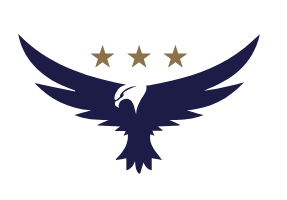Musical Instrument Names in Pashtu
Are you interested in learning about musical instruments in different languages? In this blog post, we will explore the names of musical instruments in Pashtu, a language spoken primarily in Afghanistan and parts of Pakistan. From traditional instruments like the rubab and sitar to modern ones like the guitar and keyboard, we will take a look at how different instruments are named and used in Pashtu music. Stay tuned to uncover the rich cultural heritage of Pashtu musical instruments!
Musical Instrument Names in Pashtu
1. ويوله (Violin) – String instrument played with a bow
2. رباب (Rabab) – Traditional Afghan string instrument
3. تابلا (Tabla) – Percussion instrument used in Indian classical music
4. چنگ (Chang) – Chinese string instrument similar to a harp
5. طبل (Dhol) – Double-headed drum from South Asia
6. سرودي (Sarod) – String instrument from India
7. سيتار (Sitar) – Indian string instrument with a long neck
8. داف (Daf) – Persian frame drum used in Sufi music
9. سنتور (Santoor) – Persian hammered dulcimer
10. قيتار (Guitar) – Six-stringed instrument with a flat back and curved top
11. اوتار (Oud) – Middle Eastern string instrument with a pear-shaped body
12. تابلے (Tambourine) – Percussion instrument with jingles attached to the frame
13. هارمونيکا (Harmonica) – Small wind instrument played by blowing air through reeds
14. فلوټ (Flute) – Woodwind instrument played by blowing across a mouthpiece
15. ډرم (Drum) – Percussion instrument played by striking with hands or sticks
16. بگيپا (Bagpipes) – Wind instrument with a bag for air supply
17. فڪس (Folk) – Traditional musical instrument used in folk music
18. ترنجه (Tambura) – Long-necked lute instrument from South Asia
19. راباب (Rapap) – String instrument with a round body and a long neck
20. سرنای (Surnay) – Reed instrument similar to an oboe
21. جیتار (Guitar) – Electronic version of the guitar with additional features
22. تمبر (Timbre) – Musical instrument used to give a certain tone color
23. چنگره (Changrah) – String instrument with a triangular body
24. لوچمن (Lohman) – Small drum used in traditional Afghan music
25. سورناي (Surnai) – Wind instrument similar to a clarinet
26. سيتاري (Sitarra) – String instrument with a long neck and resonator
27. وايوله (Viola) – String instrument larger than a violin
28. ټين ١٠ (10-string guitar) – Guitar with 10 strings instead of 6
29. سنوتوري (Santoori) – Modified version of the santoor
30. بازکم (Bazooka) – Long-necked string instrument from the Middle East
31. دابلتو (Dobletu) – Drum with two heads and a narrow waist
32. چوند (Chund) – Wooden percussion instrument with a hollow body
33. بوغغه (Bugha) – Turkish drum used in traditional music
34. سنوونتور (Sonuntor) – Combination of a sitar and a santoor
35. قالول (Qalul) – Simple string instrument popular in Afghanistan
36. ټمبوره (Tambora) – Drum instrument from South America
37. چانغ (Chang) – Chinese zither instrument with movable bridges
38. سرزه (Sarza) – Small drum played with hands or sticks
39. رابلمک (Rablimak) – Type of rabab instrument in Afghanistan
40. اوتولون (Otolon) – Ancient string instrument with a curved body
41. غماک (Ghamak) – Percussion instrument with a jingling sound
42. شاوالجو ويوله (Shawalju violin) – Traditional violin from Uzbekistan
43. ويولا (Viola) – String instrument larger than a violin
44. سنوور (Sanoor) – Modified version of the santoor instrument
45. سنج (Sang) – Traditional Afghan string instrument with a long neck
46. دنبور (Danbur) – Small drum used in traditional Middle Eastern music
47. هارموني (Harmony) – Combination of multiple instruments to create a harmonious sound
48. پروجه (Puroja) – Ancient musical instrument with a wooden body
49. سنټور (Santoor) – Persian hammered dulcimer instrument
50. اينجيلم (Ingilim) – Wind instrument with a reeded mouthpiece and a bell-shaped end.
Conclusion
In conclusion, learning about musical instrument names in Pashtu not only introduces us to the rich cultural heritage of Afghanistan, but also promotes cross-cultural understanding and appreciation for the diversity of musical traditions around the world. By familiarizing ourselves with the unique names and sounds of these instruments, we can further immerse ourselves in the beauty and complexity of Pashtu music. Whether you are a musician, a language enthusiast, or simply curious about different cultures, exploring the world of Pashtu musical instruments can be a rewarding and enlightening experience. Let’s continue to embrace the beauty of diversity and celebrate the universal language of music.
